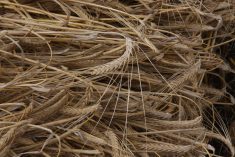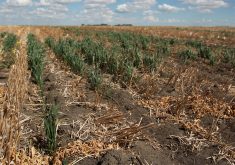Macronutrients in the soil, such as nitrogen, phosphorus, potassium and sulfur, determine at least 97 percent of nutrient-based yield increases, says Saskatchewan Agriculture soil specialist Ken Panchuk.
As a result, management of macronutrients should be a producer’s highest priority, he said.
“But deficiencies of micronutrients – boron, copper, chloride, iron, manganese, molybdenum and zinc – may also occur in Saskatchewan,” he said. “For example, copper is most important and most likely to be deficient in the grey soil zone. Boron may be the second likeliest to be deficient.”
Read Also

U.S. loses out on sales of soybean to China
U.S. soybean exporters risk missing out on billions of dollars worth of sales to China this year as trade talks drag on and buyers in the top oilseed importer lock in cargoes from Brazil.
On a per-pound basis, however, micronutrient fertilizer is expensive compared to nitrogen or phosphorus fertilizer. So the most important management decision is correct identification of the micronutrient deficiency.
“If a micronutrient deficiency is suspected, there are two steps to take,” he said.
“The first is to look for multiple evidence of the deficiency. Tissue tests, soil tests, test strips and cropping history, in combination with crop symptoms in the field, will confirm micronutrient deficiencies and economic yield responses.
“The second step is to determine whether the yield increase or quality improvement will cover the costs of the micronutrient application. In short, compare the costs of the micronutrient with the economic benefits from the improved yield or quality.”
A revised edition of Saskatchewan Agriculture’s FarmFacts, Micronutrients in Crop Production, will help farmers take these steps. It is available at rural service centres and on Saskatchewan Agriculture’s website at www.agr.gov.sk.ca.
















